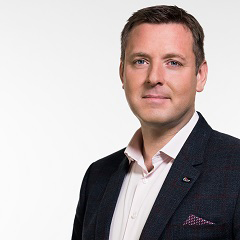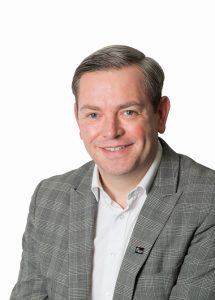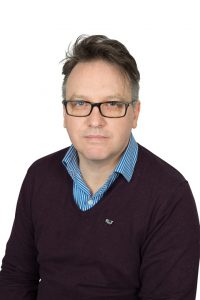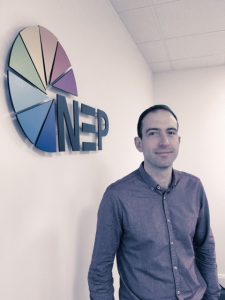SVG Europe Sit-Down: NEP UK’s senior team reflect on the successful implementation of a major OB
NEP has a history of innovation, which stretches back to its founding over 30 years ago. Alongside its OB operations, the company says it is a team of inventors, entrepreneurs, self-starters and knuckle-down get-it-done-ers, always working to come up with better solutions tailored to meet clients’ exact needs. Its award-winning engineers and technicians are focused on improving technology and production methods as they design and develop complete live and broadcast production solutions. With more than 150 HD OB/mobile units worldwide, the NEP team has supported every type of production, from The Oscars to the Olympics (and everything in between), and has worked in over 80 countries on all seven continents. Our discussion with Chris Cannon – director of technical operations UK, Brian Clark – director of sales, NEP Major Events, Steve Jenkins – president NEP UK and Ireland and Simon Moorhead – managing director, NEP Broadcast Services, UK ranged across many topics.

NEP’s president NEP UK and Ireland, Steve Jenkins
Remote production, traditional trucks, flyaway packs – how do you see those options progressing through the rest of 2018? Or will it always be ‘horses for courses’?
We are seeing an increase in all these areas. The industry is navigating changes as many broadcasters, federations and media technology companies are looking at how best to create more value and grow their businesses. For us, that means clients are exploring multiple ways to capture, store and distribute their media – and this is exciting for NEP. We have the expertise, talent and services to offer the correct solution for each of the opportunities that arise, and also combine solutions that then offer the best economical plans for our clients and their projects. That could be larger production trucks on site, smaller easily deployed remote trucks, full remote, semi-automated coverage or fly-packs, and we will continue to offer the diversity needed to serve our clients. It is clear that the remote broadcast model is maturing as connectivity is improved, but the end product has to fit both the production model and economic constraints in our market place.
Last year, in a Sit Down discussion, we asked “Where do you think we will be with HDR by the end of this year?” The answer was “Watch this space.” Are we still to watch or has something filled gap?

NEP’s managing director, NEP Broadcast Services, Simon Moorhead
HDR remains current, and NEP is well placed to support and deliver HDR coverage. Our technology is more advanced than anyone else in the UK. We decided to wait 12 months for the IP roadmap to solidify. We have two trucks launching at the start of this year that utilise the very latest IP technologies and have superseded many of the systems which were built 6-12 months ago.
We usually think of NEP UK as a leading OB provider, but there are other activities in your portfolio. Tell us more about NEP’s Mediabank – and how that benefits those involved with sports production.
NEP UK’s outside broadcast services is undoubtedly what we are most known for. However, we actually offer more diversity of services than any other UK outside broadcast operator. A large part of our business looks towards the services surrounding media management and content delivery. The direction of the NEP Group in looking towards major events and supporting our clients with our expertise and knowledge of these events across the world means we can add value through the non-broadcast operations such as Creative Technology and Screenworks. As we see a rise in remote broadcasting we will also see the synergies with media management.
Can you tell us about a particularly challenging OB during 2017 and how you rose to the occasion?
Every OB has its unique challenges; they are part of what make outside broadcasts such exciting work environments. I think our teams really do thrive on reacting to these challenges.

NEP’s Brian Clark, director of sales, NEP Major Events
With that in mind, we were incredibly proud to be the chosen broadcast technical partner to deliver host and unilateral coverage of the London 2017 IAAF Athletics, which received an RTS Award in recognition of excellence and creativity. NEP UK has a long history of delivering prestigious athletics events ranging from the Diamond League events to the Commonwealth Games. This experience, mixed with our highly adept engineering and support teams and integrated broadcast technical systems solutions enabled NEP UK to rise to the challenge in providing a vertically integrated, end-to-end value chain for our broadcast partners. Delivering 14 sessions of athletics over 10 transmission days is no mean feat, and there were obstacles to navigate, but the NEP team all rose to the occasion.
There were two major components to the host requirements, both of which needed comprehensive coverage of all the action within the stadium. The first requirement was to broadcast the host coverage and the second was to supply the International Broadcast Centre (IBC) with footage to send to rights holders around the world. Due to the size and scale of the project it was decided that NEP’s Flypack Solution would best serve both the host coverage and IBC activity. Whilst utilising our fleet of outside broadcast units to fulfill unilateral coverage, we needed the Flypacks to create something that would be bespoke, tailored and configured to deliver the London 2017 IAAF Athletics host coverage. We had over 76 cameras, three routers, 25 EVS machines, seven vision mixers and seven audio desks, and needed the flexibility to be able to change the equipment to the action that was taking place. In fact, cameras were being regularly moved between sites within the stadium. A not insignificant challenge was to link the two locations together – the host broadcast (HB) compound and IBC site – which were almost a kilometer apart in terms of cable distance, and there were a large number of signals to pass between the two sites. As well as the entire signal distribution required to feed the RHBs, there was also a number of signals that had to be distributed back to the stadium and Host Broadcast Compound.
For the first-time ever, during an event the size of the London 2017 World Athletics Championships, we used 10 Pico Antelope mini camera systems as part of the replay operation. These systems offered far better replays as they record at higher speeds than standard cameras. Each camera records with up to 520 frames per second in native HD. The quality of the replays was exceptional, with extreme slow motion, which made the EVS operation more efficient to manage. With the camera set-up, we were able to record footage from vantage points that previously were unreachable.
The NEP RF Department supplied and managed all the RF Radio Cameras for the event (as well as two for Creative Technology, another NEP Group company). Creative Technology also provided all of the required Radio Communications as part of the NEP Host Broadcaster facilities.
The NEP Edit and Ingest Department supplied a fully integrated central content core edit facility together with a total of 4 edit suite solutions, 2 for the host requirement and 2 for the IAAF. Our unilateral remit included an additional 4 edit suits, a dedicated ingest facility and indexing station all provided by the NEP Edit & ingest Department.
If you had the chance to ask an equipment manufacturer to develop or improve a solution, what would that be?

NEP’s Chris Cannon, director of technical operations UK
We need to listen and create technology that matches the consumer demand. It is important that manufacturers develop products, which ultimately create value to the consumers and customers – without that value it’s hard to find how we collectively make any of our economic models. As a result, over time we have seen new technology enter the market, which has not been able to find a viable financial model.
That being said, it is important to us, and the industry as a whole, that we have a more unified approach to IP standards. How these will be approached to take care of multiple standards in the broadcast environment, along with a better understanding of the standards, which will be put into place or should be for HDR and wide colour space with either 1080p or 4K.
Do you anticipate continuing your Student Day activity – and if so, what are you forthcoming plans
Absolutely. The NEP UK Student Open Day is one of the highlights of the year for us.
For the students, it is a fantastic opportunity to learn from key figures in broadcast and for them to understand what they can expect when they join the industry. Students also have the opportunity to get their hands-on state-of-the-art broadcast technology. In 2017 NEP UK’s 4K production unit, Sargasso, equipped with Sony 4300 cameras, SAM Kahuna switcher, Calrec Apollo audio console and EVS XT3 Channel max replay servers were on hand. Students were able to assume various roles on an OB from camera operator to Director.
It’s also a great chance for us – NEP UK – to talk to course leaders, lecturers and students about the ever-changing world of outside broadcast, and how what is learned during their courses will apply to our area of the broadcast industry.
Skills are changing and there has been a historic lack of candidates in the technology sector for broadcast and media. We decided to try and do something about that and we will continue to invest our time and money in searching for future talent.
